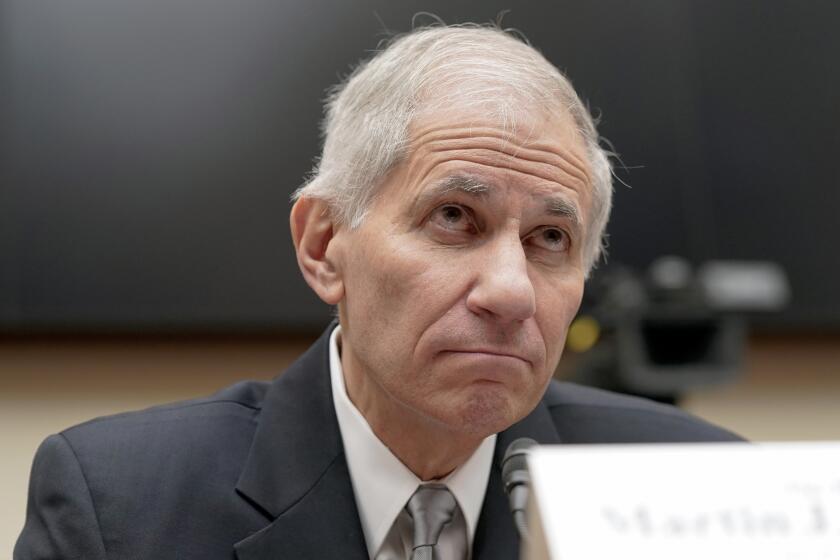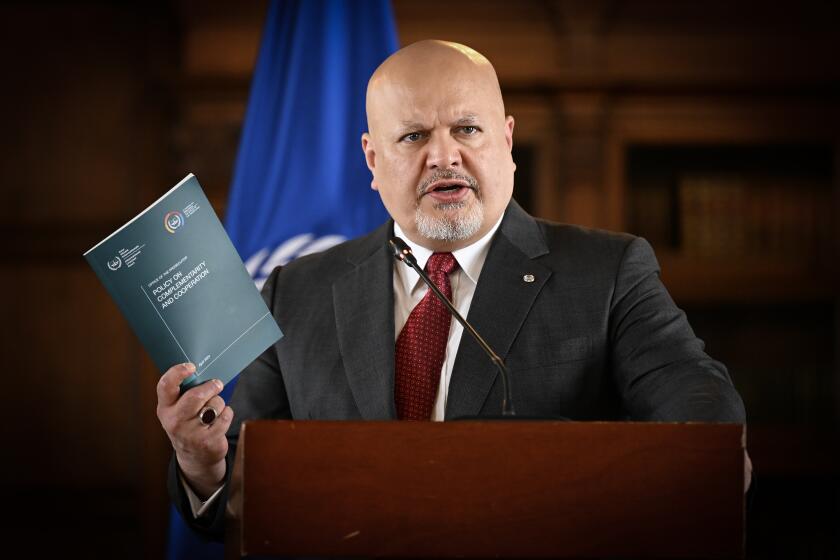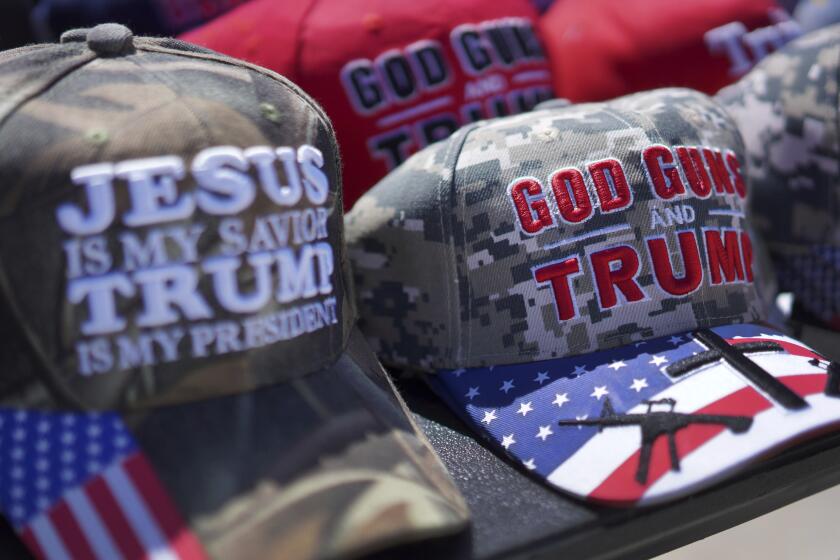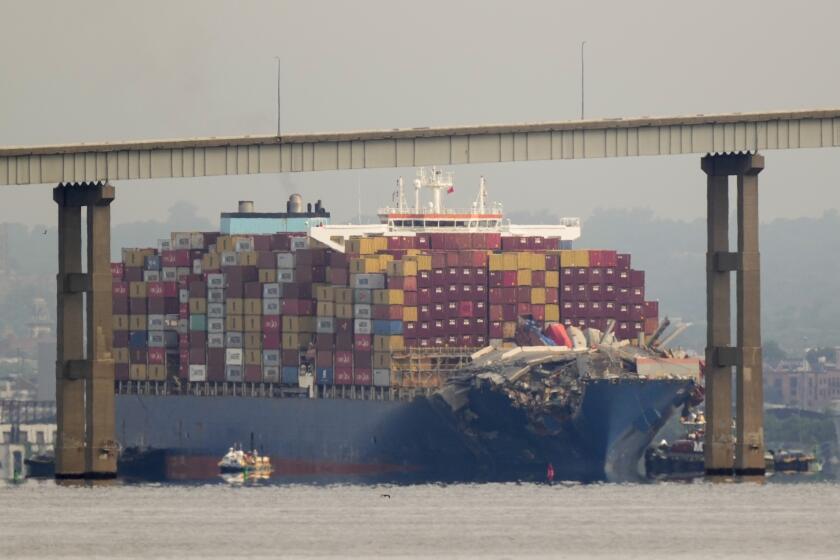Six Astronauts Had Varied Backgrounds, Common Fate
They were pilots and scientists; men and women; white, black and Asian.
Some had passed through Southern California, picking up their share of the “right stuff” at the fabled Edwards Air Force test pilot school or advancing their research credentials at labs scattered around the Los Angeles area. Others had trained and studied elsewhere.
They came together as the Challenger crew, and, Tuesday morning, their lives ended together in a burst of flame seen over and over on television by a stunned nation.
Lesser-Known Crew Members
Sharon Christa McAuliffe, the 37-year-old teacher who was aboard to share her knowledge with the children of America, was best known. But there were six other crew members of the Challenger, less well publicized.
Judy Resnik was a former Redondo Beach resident and gourmet cook who liked to jog and play classical piano. Greg Jarvis, a Hermosa Beach father of three, enjoyed tandem bicycling and playing classical guitar. Ronald McNair was a jazz saxophone player and a black belt karate champion.
Dick Scobee, Mike Smith and Ellison Onizuka were veteran military pilots.
At Edwards Air Force Base, an emergency landing site for the Challenger, National Aeronautics and Space Administration spokesman Ralph Jackson said: “We just stared in disbelief. . . . Then, we had to go to work, in case there was something we could do. But there wasn’t.”
In Houston, ex-astronaut Alan Bean, the fourth man to walk on the moon who now makes his living painting space scenes, was at his easel when his wife called with the tragic news. While chief of operations and training for NASA, he trained five of the seven who died--all but Jarvis and McAuliffe.
“It’s hard to believe they won’t be here anymore,” the stricken Bean said. “It really seems impossible.”
The commander was Francis R. (Dick) Scobee, 46, the latest in a long line of military-trained fliers who have risked their lives in space. He was a career Air Force officer whose fascination with airplanes began as a child in Auburn, Wash.
Scobee flew in Vietnam, attended Edwards’ test pilot school after the war and joined NASA in 1978.
As an Air Force test pilot at Edwards, he flew the X-24-B, a small “lifting body” experimental spacecraft, and the Boeing 747 that transported the shuttles from Edwards to Kennedy Space Center.
“He was a quiet, unassuming guy,” said NASA spokesman Jackson.
Scobee flew the Challenger April 6, 1984, in the pilot’s slot. It was the most ambitious shuttle mission up to that point in the program. The crew captured and repaired the faltering Solar Max research satellite.
Scobee is survived by his wife, June, and their children, Kathie, 25, and Richard, 21.
Michael J. Smith, 40, Challenger’s pilot this time around (in effect, the second-in-command), was another veteran pilot, one of the most experienced in the astronaut corps. He was still in the military, a Navy commander, and had logged more than 4,300 hours of flight time in 28 types of aircraft.
Tuesday’s mission was Smith’s first shuttle flight.
Born in Beaufort, N.C., he was graduated from the Naval Academy in 1967 and picked up a master’s degree in aeronautical engineering a year later from the U.S. Naval Postgraduate School.
Vietnam Veteran
Like Scobee, Smith was a Vietnam veteran. He held the Navy Distinguished Flying Cross, three Air Medals and the Vietnamese Cross of Gallantry with Silver Star.
Air Force Lt. Col. Ellison Onizuka, 39, an experienced flight test engineer, was a crew member aboard America’s first manned military space flight last year.
Following that flight, he was honored last August as grand marshal of the 45th annual Nisei Week in Los Angeles.
In 1983, he told The Times he was well aware that he was the first Asian-American astronaut. “It’s a fact I can’t hide from and have not shied away from,” Onizuka said. “And, if in some way I can serve as a model for children, that would be great, especially for those who can be shown that there is an opportunity for everyone in this country. . . .”
A native of Hawaii, he earned his bachelor’s and master’s degrees at the University of Colorado before beginning a military career that led to his assignment to the Air Force Flight Test Center at Edwards, where he accumulated more than 1,600 hours of flight time.
After his graduation from the test pilot school at Edwards, he was selected as an astronaut by NASA in 1978.
He was married to the former Lorna Leiko Yoshida of Pahale, Hawaii, with whom he had two children, Janelle Mitsue and Darien Lei Shizue.
Ronald E. McNair, 36, was born and raised in Lake City, S.C. He received a bachelor of science degree in physics at North Carolina A&T; State University in 1971 and a Ph.D. in physics from the Massachusetts Institute of Technology in 1976. He was selected by NASA to be an astronaut in January, 1978.
Before joining NASA, he spent about a year in Southern California, working during 1977 as a staff physicist, doing laser research, at Hughes Research Laboratories in Malibu. Senior staff administrator Howard Friedrich, who had shared an office with him, remembered him Tuesday as “a very smart person, very easy to talk to. He loved to laugh and joke.”
Active in Church
McNair also joined the Trinity Baptist Church in Los Angeles in that period and was active in church work. He attended Bible studies, according to Trinity pastor Dumas Harshaw, who said the quality he found most memorable in McNair was “his openness to people.”
McNair made his first shuttle flight in 1984 as a mission specialist. After the flight, the astronaut came to Los Angeles with his wife, Cheryl, for a ceremony in his honor at Trinity Baptist. He then made several speeches at local schools.
Holder of five regional black belt karate championships and a jazz saxophone player, McNair is survived by his wife and two children, Reginald, 3, and Joy, 1.
Gregory B. Jarvis, 41, of Hermosa Beach, was a Hughes Aircraft Co. shuttle payload specialist who had been scheduled to fly aboard the shuttle Columbia last month but was bumped for Rep. Bill Nelson (D-Fla.), who went up as a congressional observer.
Jarvis, born in Detroit, earned his bachelor’s degree in electrical engineering at State University of New York at Buffalo in 1967. In 1969, he received his master’s degree at Northeastern University in Boston.
He was an Air Force satellite engineer and attained the rank of captain before he left the service to become a Hughes engineer in 1973.
He was married to the former Marcia Jarboe and was the father of three children. His wife went to Cape Canaveral to watch Tuesday’s liftoff.
A next-door neighbor, John Meyer, said Tuesday that since Jarvis was bumped for the congressman in December, the couple had been “really excited. . . . They’ve been on cloud nine . . . waiting for his next turn to go up.”
Fellow Hughes engineer John Buterbaugh said Jarvis had “a very positive attitude. He was not worried in the least.”
Judith Arlene Resnik, 36, one of three mission specialists aboard the Challenger, had become America’s second woman in space--following Sally Ride--when she joined the initial flight of the shuttle Discovery in September, 1984.
Her principal job on the ill-fated Challenger mission was to test a solar sail, repeatedly unfurling and retracting a long, prototype panel that may someday be used to pull energy from the sun to power permanent space stations.
Earned Doctorate
Resnik, a native of Akron, Ohio, was graduated with a bachelor’s degree from Carnegie-Mellon University in Pittsburgh in 1970, earning her doctorate in electrical engineering seven years later from the University of Maryland.
She and Ride were among six women accepted into a 35-member class of astronauts that began training at the Johnson Space Center in 1978.
Resnik was single.
Times staff writers J. Michael Kennedy in Houston, David Smollar in San Diego and Dave Lanson in Los Angeles contributed to this story.
More to Read
Start your day right
Sign up for Essential California for news, features and recommendations from the L.A. Times and beyond in your inbox six days a week.
You may occasionally receive promotional content from the Los Angeles Times.






